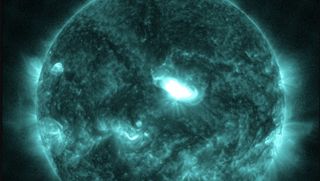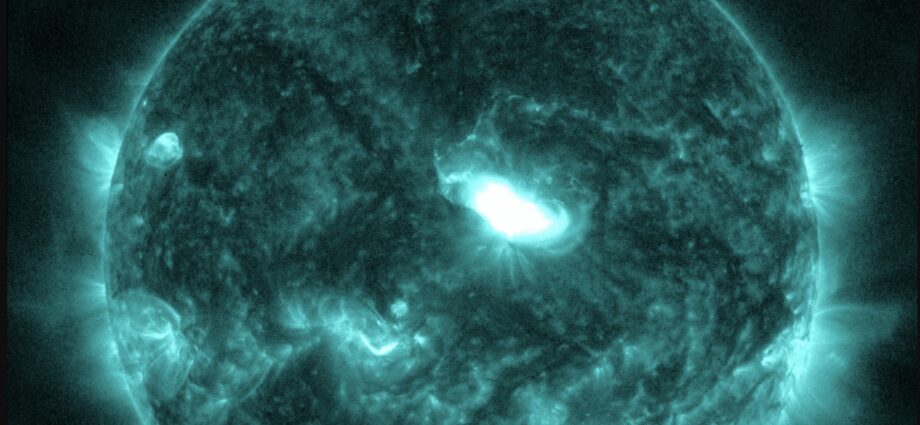
(Image credit: NOAA)
An enormous mass of charged solar particles will slam into our planet Thursday (Oct. 10), likely triggering a “severe” G4-class geomagnetic storm, according to an alert from the National Oceanic and Atmospheric Administration’s (NOAA) Space Weather Prediction Center.
Storms of this magnitude may disrupt power grids, nudge satellites off course, interfere with GPS navigation and damage “critical infrastructure technology,” NOAA warns.
The geomagnetic storm will also make auroras visible at much lower latitudes than usual. According to NOAA, the northern lights “may become visible over much of the northern half of the country, and maybe as far south as Alabama to northern California” Thursday.
The solar outburst, known as a coronal mass ejection (CME), is the result of a powerful solar flare that erupted from our star on the evening of Oct. 8, according to NOAA. The flare has been categorized as an X 1.8-class solar flare, which is the strongest type of flare the sun can emit.
Solar flares occur when tangled magnetic-field lines on the sun violently snap back into place. Some flares may be accompanied by CMEs — fast-moving blobs of plasma that can take several days to reach Earth, if our planet happens to be within the firing line. Upon hitting our planet, CMEs can cause major disturbances in Earth’s magnetic field known as geomagnetic storms, resulting in technological malfunctions and widespread auroras. NOAA measures geomagnetic storms on a scale of 1 to 5, with G1 storms considered “mild” and G5 storms dubbed “extreme.”
Related: 32 stunning photos of auroras seen from space
There is little that individuals can do to prepare for the incoming G4 geomagnetic storm. But aurora chasers are advised to get as far away from city lights as possible for the best chance at seeing the northern lights. You don’t need any special gear to see auroras, but viewing them through a phone camera can allow the colors to pop even more than they appear to the naked eye.
Solar flares, CMEs and auroras become more common during solar maximum, the peak of the sun’s roughly 11-year activity cycle. The current cycle’s solar maximum was initially predicted to begin in 2025, but some scientists suggest it may be happening right now. Researchers won’t know for sure until the maximum has ended and solar activity begins to decline again.
Besides Earth, another object is also in the firing line of the incoming CME: the bright comet C/2023 A3 (Tsuchinshan-ATLAS), which is currently making its closest approach to the sun in 80,000 years. There’s a chance the comet’s tail will be blown off or bent by the solar eruption, according to spaceweather.com, as was the case when a CME hit the horned “devil comet” 12P/Pons-Brooks earlier this year. Skywatchers won’t know if comet C/2023’s tail survived until it emerges from the sun’s glare later this weekend.

